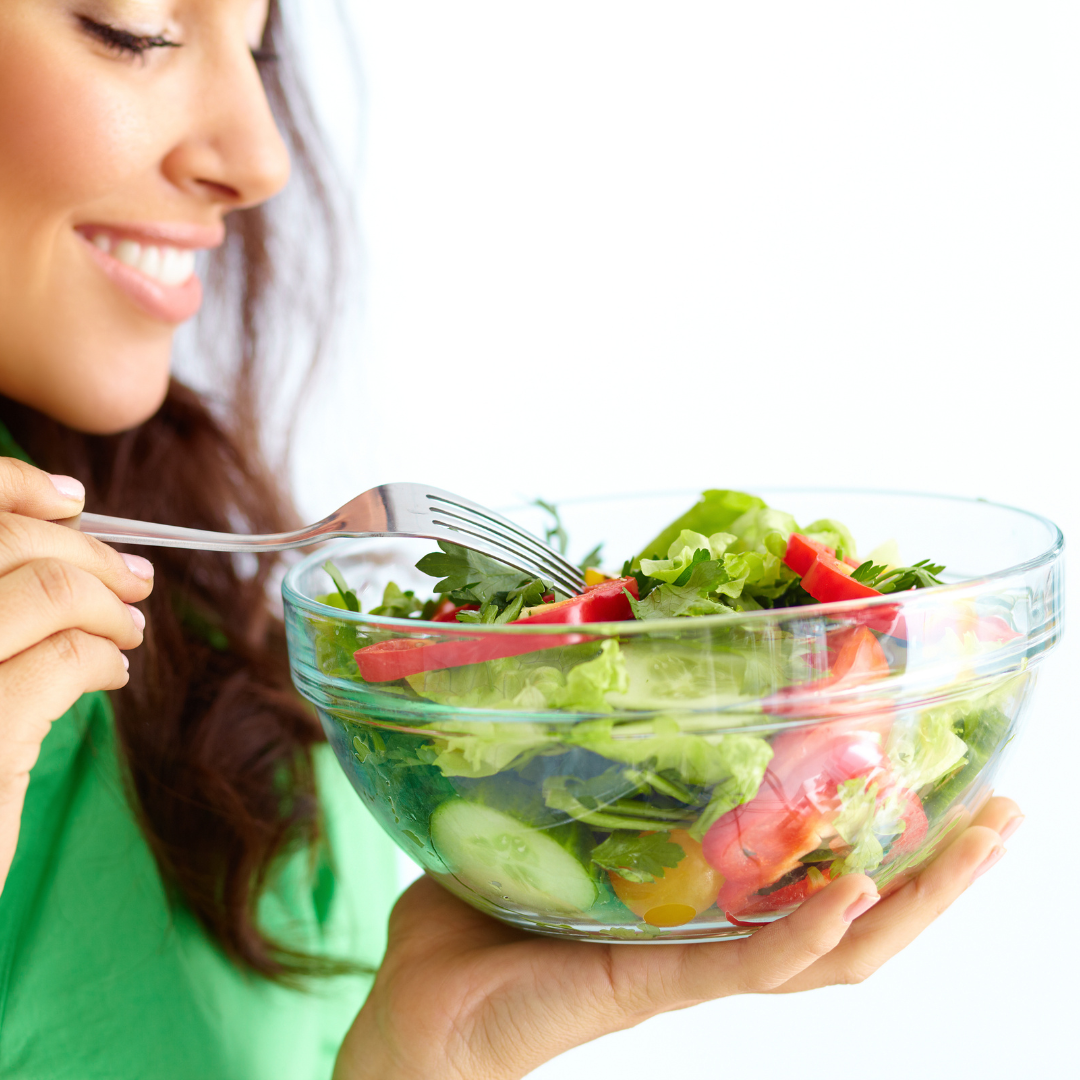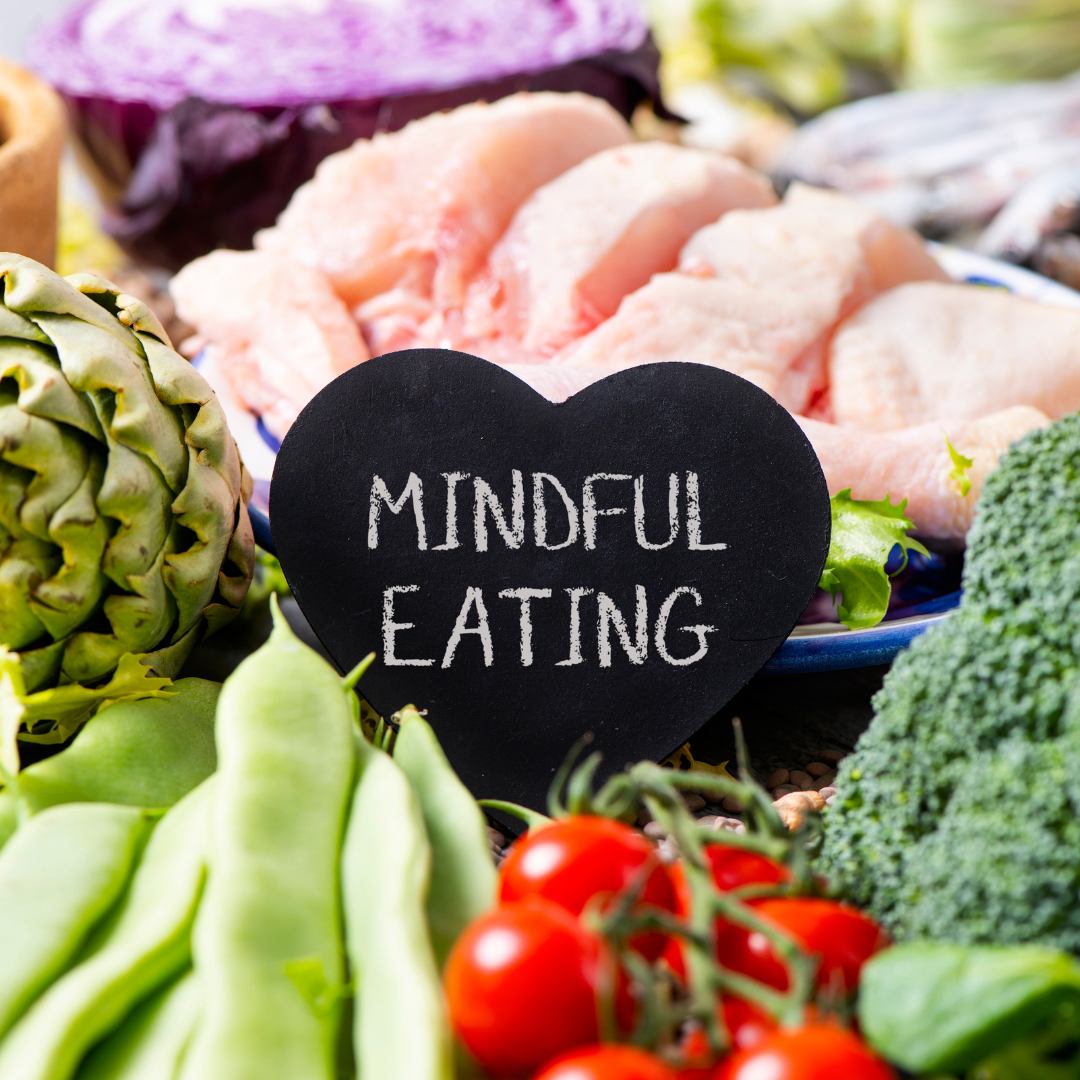
A long, meaningful life depends on being healthy and fit. Exercise and wholesome eating should be a part of our daily routines since they not only promote physical health but also mental well-being. Here are 10 Powerful Strategies for a Healthy and Fit Lifestyle.
1. Eat a Balanced Diet and Get Healthy and Fit in No Time

-
Understanding Nutrients
Maintaining top health and wellbeing requires a balanced diet. The first step is to comprehend the many nutrients that our bodies need. Energy is provided by macronutrients, including proteins, lipids, and carbs, which also support a number of biological processes. Foods including grains, fruits, and vegetables contain carbohydrates, which are the body’s main source of energy. Lean meats, fish, lentils, and dairy products are good sources of protein, which is essential for maintaining and rebuilding tissues. Avocados, almonds, and oils are examples of foods that include fats, which are essential for hormone synthesis and nutritional absorption.
-
Importance of Portion Control
While food quality is essential, portion management is crucial for avoiding overeating and maintaining a healthy weight. It entails being aware of how much food is eaten and comprehending proper portion amounts. Portion control aids in calorie intake regulation, which is crucial for weight control. Effective portion management may be achieved by employing simple techniques, including smaller plates, measuring meal quantities, and paying attention to hunger and fullness signals.
-
Incorporate Fruits and Vegetables
The vitamins, minerals, antioxidants, and dietary fibre found in fruits and vegetables are abundant. As they provide necessary nutrients while being low in calories, they are crucial parts of a balanced diet. Try to include a diversity of fruit and vegetable colours in your meals and snacks. Increase your diet of leafy greens, berries, citrus fruits, cruciferous veggies, and other seasonal fruits and vegetables. Make them your own by using them in salads, stir-fries, smoothies, and muesli or yoghurt toppings.
-
Choosing Lean Proteins
Protein is an essential ingredient for creating enzymes and hormones, maintaining immune system function, and repairing and constructing tissues. Choose lean sources of protein such as skinless chicken, fish, lentils, tofu, and low-fat dairy items. These selections are healthier since they have lower levels of cholesterol and saturated fat. To provide a varied range of necessary amino acids, include a variety of protein sources in your meals.
-
Drinking Enough Water
For your overall well-being and health, it’s crucial to stay hydrated. Numerous body processes, including digestion, circulation, and temperature control, depend on water. To replace lost fluids, try to consume enough water throughout the day. The Institute of Medicine recommends an approximate daily consumption of 3.7 litres for males and 2.7 litres for females, although individual requirements may differ. Carry a water bottle with you to serve as a reminder to sip water and think about hydrating meals like fruits and vegetables.
2. Exercise Regularly

-
Importance of Physical Activity
Maintaining excellent health and general well-being requires regular exercise. Physical exercise has a variety of advantages, including bettering weight control, mental wellness, muscular strength, and cardiovascular health. Chronic diseases, including heart disease, diabetes, and certain forms of cancer, are all risks that exercise helps to lower. Additionally, it improves sleep quality, lowers stress, and lifts the mood.
-
Cardiovascular Exercise
Cardiovascular exercise, sometimes referred to as aerobic exercise, is essential for boosting cardiovascular fitness and heart health. It includes physical activities like walking, jogging, swimming, cycling, and dancing that raise your heart rate and breathing rate. Regular cardiovascular exercise improves stamina, lowers blood pressure, lowers cholesterol, and improves cardiovascular health in general.
-
Strength Training
Strength training is essential for developing bone density, preserving muscle mass, and enhancing general strength and function. Targeting certain muscle groups is done by applying resistance, such as free weights, weight machines, or bodyweight workouts. Squats, lunges, push-ups, and weightlifting are all examples of strength training activities. Regular strength training helps to improve body composition, metabolism, and physical performance, in addition to physical performance.
-
Flexibility and Mobility
Exercises that improve joint health, reduce injuries, and enhance total functional movement all require flexibility and mobility. These exercises aim to develop muscular flexibility and the range of motion in your joints. Stretching, yoga, Pilates, and tai chi are a few examples of workouts that increase flexibility and mobility. By including these exercises in your regimen, you may boost your athletic performance, improve your posture, and lessen your chance of developing muscle imbalances and tight joints.
-
Tailoring Exercise to Your Needs
It’s important to tailor your workout plan to your own requirements and tastes when it comes to exercising. Think about your exercise level, your objectives, and any unique health concerns or restrictions you may have. Start out with low-impact exercises and progressively increase the time and intensity as you become more experienced. For advice on appropriate workouts and adjustments, if you have any health issues or injuries, speak with a qualified trainer or healthcare provider. Picking enjoyable activities can help you stick to a regular exercise schedule and stay motivated.
3. Manage Your Stress

-
Causes and Consequences of Stress
Stress is a natural response to difficult or demanding circumstances. However, sustained or ongoing stress may have a severe impact on one’s physical and emotional well-being. Workplace pressure, interpersonal conflicts, money problems, and significant life transitions are some common sources of stress. Unmanaged stress may lead to symptoms including headaches, exhaustion, irritability, trouble focusing, and an elevated chance of developing chronic illnesses like depression and cardiovascular disease.
-
Stress-Reducing Techniques
It’s essential to include stress-relieving practises into your everyday routine if you want to handle stress successfully. Exercises that include deep breathing, such as box breathing or diaphragmatic breathing, may aid in triggering the body’s relaxation response. To encourage physical and mental relaxation, distinct muscle groups are tensed and released gradually. Stress levels may be reduced by using other methods like yoga, meditation, and enjoying enjoyable activities.
-
The Benefits of Meditation
Focusing the attention and fostering a sense of quiet and clarity are key components of the meditation practice. Numerous advantages for reducing stress and improving general health have been shown. Regular meditation practice may aid in lowering anxiety, enhancing emotional well-being, improving concentration and attention, and fostering a feeling of inner calm. These advantages may be attained in various ways via different types of meditation, such as mindfulness meditation, guided meditation, or loving-kindness meditation.
-
The Positive Impact of Adequate Sleep
Maintaining excellent physical and mental health depends heavily on getting enough sleep. Lack of sleep or poor-quality sleep may have a substantial negative impact on stress levels and general health. To effectively manage stress, one must develop sound sleeping practises. Attempt to get the seven to nine hours of sleep every night that are advised for adults. To encourage sounder sleep and lessen stress, establish a soothing bedtime ritual, maintain a cosy sleeping environment, minimise exposure to electronics before bed, and place an emphasis on regular sleep and waking periods.
4. Find Time to Relax

-
Activities to Reduce Stress
To maintain overall wellness, it’s important to take part in activities that encourage relaxation and provide a reprieve from everyday tensions. Stress-reduction techniques include taking a stroll in the outdoors, meditating or deep breathing, listening to calming music, reading a book, or engaging in hobbies like painting, gardening, or music making. You may successfully combat the bad effects of stress by engaging in things that make you happy, relax you, and give you a feeling of serenity.
-
The Importance of “Me Time” in Healthy and Fit Life
Making time for oneself, sometimes known as “me time,” is essential for self-care and stress reduction. It involves setting aside time to partake in pastimes that make you feel good and relaxed, free from any outside demands or interruptions. “Me time” enables you to reenergize, prioritise your health, and enjoy leisurely activities like taking a lengthy bath, sipping tea slowly, or practising self-reflection.
-
The Benefits of Relaxation
Stress may be reduced, and a profound state of relaxation can be achieved through relaxation methods such as progressive muscle relaxation, guided imagery, or visualisation. Regular relaxation techniques can reduce blood pressure, ease muscular tension, encourage sounder sleep, and improve general wellbeing. By lowering anxiety, elevating mood, and enhancing feelings of peace and serenity, relaxation may also have a favourable effect on mental health.
5. Quit Unhealthy Habits

-
Smoking and Respiratory Health
One of the biggest causes of avoidable illnesses and early mortality is smoking. The risk of lung cancer, chronic obstructive pulmonary disease (COPD), and other respiratory illnesses rises as a result of its adverse impact on respiratory health. The best way to protect your lungs, lower your chance of getting respiratory disorders, and improve your general health is to stop smoking. To effectively stop smoking, look for assistance from medical specialists or smoking cessation programmes.
-
Alcohol and Addiction
Alcoholism is a serious health risk factor that may lead to liver damage, an increased risk of cancer, heart issues, and addiction. Alcohol should be used in moderation, and you should know your limitations. It might be an indication of addiction if you struggle to regulate or quit drinking. To treat alcohol addiction and create better behaviours, look for assistance from medical specialists or support groups.
-
Recreational Drug Use
The physical and mental health consequences of recreational drug use are serious. In addition to increasing the risk of accidents and injuries, illicit narcotics may cause addiction, harm internal organs, impair cognitive function, and cause organ damage. It’s important to refrain from taking recreational drugs and get assistance if you or someone you know is battling drug addiction. It is possible to overcome addiction and encourage a healthy lifestyle with the help of rehabilitation programmes and expert guidance.
-
Understanding the Impact of Unhealthy Habits
Smoking, excessive alcohol consumption, and drug usage for recreational purposes are all unhealthy behaviours that may seriously harm one’s health and wellbeing. These behaviours have an adverse effect on relationships, mental health, and general quality of life, in addition to raising the chance of contracting numerous illnesses. You may greatly enhance your health and well-being by recognising the negative effects of unhealthy behaviours and taking action to stop them or get help.
6. Maintain Proper Hygiene

-
Daily Practices for Hygiene
The transmission of bacteria, viruses, and illnesses may be stopped by practising good hygiene. Make it a habit to brush your teeth at least twice a day, floss, and use mouthwash for dental hygiene. Take frequent showers or baths to keep your body clean. Wash your hands thoroughly with soap and water. To preserve cleanliness and avoid the buildup of dirt and germs, you should also wash and change your clothing often.
-
Dental Care
For overall health, maintaining good dental hygiene is essential. Fluoride toothpaste, daily flossing, and routine dental checkups and cleanings are all necessary for preserving healthy teeth and gums. Tooth decay, gum disease, foul breath, and other oral health issues may result from poor oral hygiene. You can avoid oral illnesses and ensure a healthy smile by practising good dental hygiene.
-
Managing Skin Health
Taking care of your skin helps to keep it clean, moisturized, and protected. Establish a skincare routine that includes cleansing your skin with a gentle cleanser, moisturizing daily, and using sunscreen with a high SPF to protect against harmful UV rays. Avoid harsh chemicals or products that may irritate your skin, and be mindful of any specific skin conditions you may have. Proper skincare promotes healthy skin and can help prevent issues like acne, dryness, and premature aging.
-
Handwashing and Illness Prevention
Regular hand washing is one of the best strategies to prevent the spread of germs and illnesses. Wash your hands for at least 20 seconds with soap and water before eating, just after using the restroom, and after coughing, sneezing, or blowing your nose. Hand sanitizers may be used in situations where soap and water are not accessible, but they shouldn’t replace proper handwashing. Keeping up with basic hand hygiene reduces the chance of becoming sick and enhances overall health.
7. Schedule Regular Check-Ups

-
The Importance of Health Check-Ups for a Healthy and Fit Lifestyle
Early identification, prevention, and treatment of possible health disorders depend heavily on routine health examinations. To evaluate your general health and Fitness, keep an eye on your vital signs, and address any worries or symptoms, schedule regular consultations with your healthcare professional. Your doctor may conduct physical exams, request laboratory testing, and provide advice on healthy lifestyle choices and preventative actions during checkups. The maintenance of good health and the early detection of possible health issues both depend heavily on routine checkups.
-
Choosing the Right Medical Professionals
Selecting the right medical professionals is crucial for receiving quality healthcare. Research and choose doctors, specialists, and healthcare facilities that align with your needs and preferences. Consider factors such as their expertise, credentials, experience, patient reviews, and the convenience of location and appointment availability. Building a trusting and collaborative relationship with your healthcare providers enables effective communication, personalized care, and better health outcomes.
-
Making the Most of Your Doctor’s Visits
Preparing for doctor’s visits can help maximize the benefit and ensure that you address all your concerns. Make a list of any symptoms, questions, or changes in your health to discuss with your doctor. Bring along a list of current medications, allergies, and previous medical records. Actively participate in the conversation, ask for clarification if needed, and be honest and open about your health habits and lifestyle. Taking an active role in your healthcare empowers you to make informed decisions and receive the best possible care.
-
Managing Chronic Health Conditions
For individuals with chronic health conditions, regular check-ups are even more critical. These conditions may require ongoing monitoring, medication adjustments, and lifestyle modifications. Follow the treatment plan prescribed by your healthcare provider, and communicate any changes in your condition or symptoms during check-ups. Engage in self-management strategies, such as adhering to medication schedules, maintaining a healthy lifestyle, and seeking support from healthcare professionals or support groups. Regular check-ups provide an opportunity to assess the progress of your condition and make necessary adjustments to your management plan.
8. Protect Your Skin from Sun Damage

-
Understanding UV Rays
The sun emits UV (ultraviolet) rays as one kind of radiation. Long-term UV radiation exposure may injure the skin, increasing the risk of skin cancer and causing sunburn and early ageing. Both UVA and UVB radiation may cause skin damage; therefore, it’s crucial to protect your skin from them. Take measures while you’re outdoors since UV rays may be felt even on gloomy days.
-
Skin Cancer Risk and Prevention
In the whole world, skin cancer is the most prevalent kind of cancer, yet it is also very preventable. Reduced skin cancer risk is mostly due to sun protection for your skin. When you are outside, cover up yourself with protective gear, such as long-sleeve shirts and wide-brimmed hats. Apply high SPF (Sun Protection Factor) sunscreen to exposed skin, and reapply it every two hours or more often if you are swimming or perspiring. The sun’s rays are at their greatest during peak hours, which are often between 10 a.m to 4 p.m.
-
Sunscreen and Protective Clothing
Sunscreen is an essential tool for protecting your skin from UV damage. Choose a broad-spectrum sunscreen that protects against both UVA and UVB rays, and use one with an SPF of 30 or higher. Apply sunscreen generously to all exposed areas of skin, including your face, neck, arms, and legs. Don’t forget often overlooked areas, such as the back of your neck, ears, and tops of your feet. In addition to sunscreen, wear protective clothing that covers your skin and shades you from the sun.
-
The Importance of Vitamin D
It’s necessary to guarantee proper vitamin D levels in addition to protecting your skin from sun damage. A robust immune system, strong bones, and general wellbeing all depend on adequate vitamin D intake. Spend a certain amount of time in the sun every day without sunscreen to strike a balance between vitamin D production and sun protection. Usually, a few times a week of 10 to 15 minutes of sun exposure on your face, arms, or legs is enough to produce enough vitamin D. However, this may differ based on factors including your location, skin type, and the season.
9. Stay Hydrated for a Healthy and Fit You

-
Adequate Water Intake
Maintaining good health and physical functioning depends on proper hydration. Water is crucial for cleaning away waste materials, assisting digestion, controlling body temperature, and carrying nutrients. A minimum of eight glasses of water (or 64 ounces) should be consumed each day; however, individual water requirements may vary depending on things like activity level, climate, and general health. Aim to consistently drink water throughout the day, paying attention to your body’s cues.
-
The Importance of Electrolytes
Minerals called electrolytes are essential for maintaining normal fluid balance, neuron function, and muscle contractions. It’s critical to replace both water and electrolytes when you perspire or lose fluids as a result of an illness. Sodium, potassium, magnesium, and calcium are electrolytes. Electrolyte-rich meals and drinks, such as sports drinks, coconut water, bananas, and leafy greens, may assist optimal hydration by restoring electrolyte balance.
-
Managing Dehydration
Dehydration occurs when your body loses more fluids than it takes in, leading to an imbalance in water and electrolytes. It can cause symptoms like thirst, dry mouth, fatigue, dizziness, and dark-colored urine. To prevent dehydration, drink water regularly throughout the day, especially in hot weather or during physical activity. If you experience signs of dehydration, increase your fluid intake, and consider consuming foods or drinks that contain electrolytes to rehydrate effectively.
-
Best Practices for Hydration
Aside from getting enough water to drink, there are additional habits that help improve hydration. Caffeine and alcohol should be used in moderation or avoided altogether since they might have diuretic effects and cause further fluid loss. Consume a diet heavy in fruits and vegetables since they have a high water content and help keep you hydrated overall. If you want a constant reminder to drink water, think about investing in a reusable water bottle. If you want to make it more appealing to you, try adding some fruit or herbs.
10. Mindful Eating Exercise

-
Being Present While Eating
Being totally present and involved when eating is part of mindful eating exercise. Spend some time enjoying your food and savouring each mouthful rather than hurrying through meals or multitasking. Reduce interruptions from things like phones, television, or work-related activities. When chewing, be sure to take in the flavour, texture, and scent of the meal. Eating mindfully improves digestion, fosters a positive connection with food, and increases overall meal pleasure.
-
Understanding Your Body’s Hunger Cues
Learning to recognize and respond to your body’s hunger cues is essential for maintaining a balanced and healthy approach to eating. Pay attention to physical sensations of hunger and fullness. Eat when you feel moderately hungry and stop eating when you are comfortably full. Avoid emotional eating or using food as a coping mechanism for stress, boredom, or other emotional triggers. By listening to your body’s cues, you can establish a healthier relationship with food and maintain a more intuitive eating pattern.
-
Avoiding Emotional Eating
Emotional eating refers to using food to cope with emotional or psychological distress, rather than eating in response to physical hunger. It often involves consuming comfort foods that are high in calories, sugar, or unhealthy fats. To avoid emotional eating, practice alternative coping strategies such as engaging in physical activity, journaling, meditating, or seeking support from friends, family, or a therapist. Developing healthier ways to manage emotions reduces reliance on food and promotes overall well-being.
-
The Benefits of Mindful Eating Exercise
Beyond only fueling the body, mindful eating exercise has several advantages. It promotes a better understanding of food and the eating process, as well as a stronger feeling of pleasure and enjoyment from meals. Additionally, mindful eating exercise may support improved digestion, better portion management, and a more nutritionally balanced diet. By paying attention to your eating patterns, you may consciously make decisions that support your wellness objectives.
FAQs
-
How Often Should I Exercise?
The frequency of exercise depends on individual goals and fitness levels. For general health benefits, aim for at least 150 minutes of moderate-intensity aerobic exercise or 75 minutes of vigorous-intensity exercise per week, along with strength training exercises at least twice a week. However, consult with a fitness professional or healthcare provider to determine the exercise frequency that suits your specific needs.
-
What should I do if I don’t like to exercise?
If you don’t enjoy traditional forms of exercise, try exploring different activities until you find something you enjoy. Engage in physical activities that align with your interests, such as dancing, hiking, swimming, or playing a sport. Incorporate movement into your daily routine by taking the stairs instead of the elevator or walking instead of driving short distances. Remember, any form of physical activity is better than none, so find what works for you.
-
How Can I Manage My Stress on a Daily Basis?
Managing stress on a daily basis involves adopting stress-reducing techniques that work for you. Deep breathing exercises, practicing mindfulness or meditation, engaging in hobbies, spending time with loved ones, and getting enough sleep are effective ways to manage stress. Experiment with different techniques and prioritize self-care to find what helps you relax and unwind.
-
Can I eat unhealthy food occasionally?
Occasional indulgence in unhealthy food is acceptable as long as it’s balanced with an overall healthy diet. Remember that moderation is key. Aim to make nutritious food choices most of the time while allowing yourself the flexibility to enjoy your favorite treats occasionally. Focus on the overall quality of your diet rather than obsessing over occasional indulgences.
-
How Much Water Should I Drink in a Day?
The recommended daily water intake varies depending on factors such as activity level, climate, and individual needs. A general guideline is to aim for about eight glasses of water per day, which is approximately 2 liters or half a gallon. However, listen to your body’s thirst cues and adjust your water intake accordingly. Additionally, factors like exercise or illness may require increased water consumption.
-
How Can I Stop Emotional Eating Habits?
To stop emotional eating habits, it’s important to develop awareness and alternative coping mechanisms. Practice mindful eating by paying attention to physical hunger cues and distinguishing between emotional and physical hunger. Find healthy ways to manage your emotions, such as engaging in physical activity, journaling, or talking to a trusted friend or therapist. If emotional eating becomes a significant concern, consider seeking professional help.
-
Should I Consult My Doctor Before Making Any Major Lifestyle Changes?
It’s always advisable to consult your healthcare provider before making significant lifestyle changes, especially if you have any pre-existing health conditions or concerns. Your doctor can provide personalized advice, evaluate potential risks, and help you create a plan that aligns with your specific needs. Regular check-ups and open communication with your healthcare provider are essential for maintaining optimal health.
Conclusion
A healthy and happier existence depends on taking care of your body.You may enhance your physical and emotional well-being by adopting the 10 suggestions above into your everyday practise.Remember to be patient and gentle with yourself while you engage in these exercises.Long-term advantages will result from making minor lifestyle adjustments and putting your health first.Consult your healthcare practitioner if you have any worries or inquiries for specific advice and direction.






